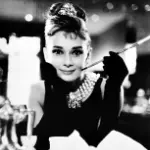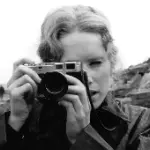Remember is one of the more exceptional in subject matter and temperament in 2022 Korea. It is adapted from the Canadian film of the same name and has a personalized visual style (detailed analysis in this article). The film may not be perfect on a story level, but in general, it should be considered mid to upper-level among the many new Korean productions.
1 - Story
The movie has a great story, a tragedy full of the pain of the times. The story begins in the 1940s. It was the era of Japanese rule in Korea when Japan advocated the "Greater East Asia Co-Prosperity Sphere" plan and waged war against East and Southeast Asian countries. Pil-ju's family was devastated, his father was killed alive, his sister was forced to become a "comfort woman", and he was the only one who survived.
When the film begins, it is decades after that period in history. Pil-ju is on his deathbed, and he intends to carry out his revenge plan that he has spent more than 60 years conceiving. While working at a restaurant, he befriends a young man named In-gyu and they become good friends. He invites Ren Kui to work part-time as his driver for a week. The unsuspecting Ren Kui is thus drawn into the bloodbath.

As good friends, they also had an exclusive greeting handset
This is an extremely tragic story, but the film does not fall into the emotion of grief. Without dwelling on past grudges, there are not too many flashbacks, and they are just a few moments away. The director focuses on the present, adding gun battles and car chases to expand the story while building characters. The dual actors are also delightful, and the rivalry is lovely, like a spice to this tense, heavy drama.
However, this mix is both beneficial and detrimental. The upside is that the film retains the tragic core of the characters, but also dissipates the excessive sadness that audiences may experience while watching. The downside is that to have everything is to have nothing.
This film reminds me of the John Wick series. Compared to Remember, the story of John Wick is simple: you killed my family, I'm going to kill you all. Start with small soldiers, and finally kill the boss. The difficulty of the killings increases, just like playing a game. Every time you pass a level, it means a higher challenge and a more exciting viewing experience.
There are multiple villainous characters in this film, but the role of the relationship is too scattered, so the old man in revenge does not bring a sense of thrill to the audience to brush the wild upgrade. If revenge fails to give people the feeling of a good time, then the bloody shootout on the screen becomes a sensory stimulation that stays superficial.

Although only purely visual stimulation, the John Wick series are also loved by the audience. This year, John Wick: Chapter 4 will be released, I wonder what kind of revenge story will be.
2 - Extensive use of red
One particular aspect of the film's color language is the use of red.
First, let's look at these movie posters below. In the left picture, Nam Joo-hyuk is wearing a red jacket. His red jacket should be very conspicuous against the white background, but a piece of his jacket is shaded by Lee Sung-min's figure. This shade makes it look much darker as if the director is telling the audience that the young man has been influenced by the man from the opposite.
The middle picture is another version of the poster. In comparison to the red jacket, this red sports car brings a stronger sense of visual impact. If we don't look closely, we may not be able to see the faces of the two characters in the car, let alone the expressions. The picture on the right is the poster of Green Book.
They are similar in content, both a person responsible for driving and a person with something to do, the seating order is also consistent with the plot of the film. However, in the Green Book poster, the character outline is prominent, with clear grooming, people, and cars in the same tone. The poster of this film, however, has the red vehicle as the main visual, and the others are weakened. Comparing these two posters, you can see immediately which one means harmony and another one means conflict.

The two posters in the middle and left are Remember, and on the right is Green Book.
There are a lot of red scenery and red props in the film, the following pictures are taken from the restaurant scene. How many red elements can you find?

Santa Claus costumes, girls wearing plaid dresses, I LOVE YOU decorations on the wall, staff clothing (striped ties, name tags), guitars, baseball uniforms, baseball caps, lights outside the blinds, and so on.
In the pivotal scenes, the props that are directly related to the plot are also in red. In the scene where they are hiding from the police, two people are sitting in a cafe filled with red items.

In addition to the jackets Nam Joo-hyuk always wears and the cars the main characters drive, there are also the barricades that were knocked over in the crash scene, the Coke cans that are essential props for making smoke bombs, and even the background color of the Coke can close-ups are all red.

This picture is the scene of the cafe. The tables and chairs and curtains are red, which need not be said. The paintings on the wall, and the words on the glass, are also red.
Of course, we can not forget the most significant red - blood. The first car accident scene at the beginning of the movie sets the mood, which emphasizes the blood-related, red imagery of the movie.
Take a closer look at the following set of shots: 1 - red warning lights flashing by the roadside; 2 - Pil-ju turning around, his face looking red under the red warning lights and his eyes reflecting red light; 3 and 4 - his hand bleeding and holding the gun (focusing on the Chinese characters on the gun); 5 - his expression wretched and confused, half in the red light and half in the darkness. The half-light and half-dark light imply his contradiction, on the one hand, he is tied by the dark memories, and on the other hand, the path of revenge is flooded with blood.

After the first four shots lay the groundwork, the fifth shot depicts his situation.
Red has different roles in different situations, and the visuals are very strong, distinct, and memorable. In this movie, we can divide red into two categories, one is red that feels warm, welcoming, and energetic, such as the restaurant's decoration, the staff's costumes, In-gyu's infrared jacket, and Santa Claus's costume. In-gyu's red also belongs to this category. He has no motive for revenge and there is no contrast between what is on the surface and what is on the inside, just a simple young man. The red color on his body symbolizes the exuberant vitality of youth.
The other category points to blood, danger, and violence. The red color of Pil-ju is one of these. He is seriously ill and dying of old age. Whether it is his revenge or his future, the end that greets him will be a tragedy associated with death. The film's understanding of red is complex. The director is not only good at using one type of red color to the extreme but also cleverly contrasts different imagery of red. Whether it is warm or dark, the characters' inner emotions can be displayed visually.
Lastly, I would like to talk about the key red car. As a tool of crime, this car is overly conspicuous, as if two people are worried that the police will not find it. So, why is this sports car designed to be red? In my understanding, in addition to the intense visual effect, meaning the road to revenge, the car's red color also seems to convey some of the relationships between the two people. There is a somewhat dangerous but fascinating bond between the two of them, just as the color red gives the impression.
3 – History remembers.

During the Japanese occupation, newspapers in Korea were suspended or heavily censored, the Japanese language and culture were taught in schools, and Koreans were forced to switch to Japanese names. Since a Korean name associated a person with his or her ancestors, changing a name also meant losing one's ancestors. Many Koreans chose to commit suicide rather than change their names. Others lived in humiliation and kept their Korean names secret.
The trauma of war is a subject that has long been present in Korean cinema.
In the film, several of those killed by Pil-ju committed heinous crimes back in the day. But today, they either have reconciled themselves, or they justify their evil deeds by grandly distorting history. For example, the history professor in the film. He uses his position as a professor to promote the idea that we become a member of modern society precisely because of the Japanese invasion and colonization. History is just history, and a nation trapped in the past has no future.
But what are the facts? Colonial plunder is a necessity for capitalist expansion. The crimes against humanity committed during the expansion have absolutely no historical justice. The survivors of World War II back then may have passed away, but what happened to them cannot be forgotten and should not be forgotten. The impact of the war never disappears, and it lingers in the hearts of every righteous person.

Pil-ju has the names tattooed on his hand. He struggles to remember the sins of others and his own sins as well.
Pil-ju, the main character of this film, suffers from Alzheimer's and has severe memory loss. For him, the history he absolutely must not forget is gradually forgotten. So, he tries everything to remember. To him, it is just a disease. However, for the audience, his memory loss is a microcosm.
Is the world, too, slowly forgetting that history? The survivors will eventually pass away, and the young people will gradually grow up. Will they choose to ignore the history or carry the memory? As a revenge film, Pil-ju puts down his gun at the end of the film and confesses to the crime, which is really unacceptable. But why did the director do this?
Alzheimer's is a kind of disorder where a person is alive but no longer has a memory. It's like the director is telling us that those who remember have passed away but those who are living do not remember. Or, this is the meaning of the ending.

















![[HORROR]👻 In my restless dreams, I see Silent Hill](https://img.peliplat.com/api/resize/v1?imagePath=peliplat/article/20230406/d5cbcf7620c267ed37294699dc873093.png&source=s3-peliplat&mode=FILL&width=720&height=340&limit=false)




































Share your thoughts!
Be the first to start the conversation.